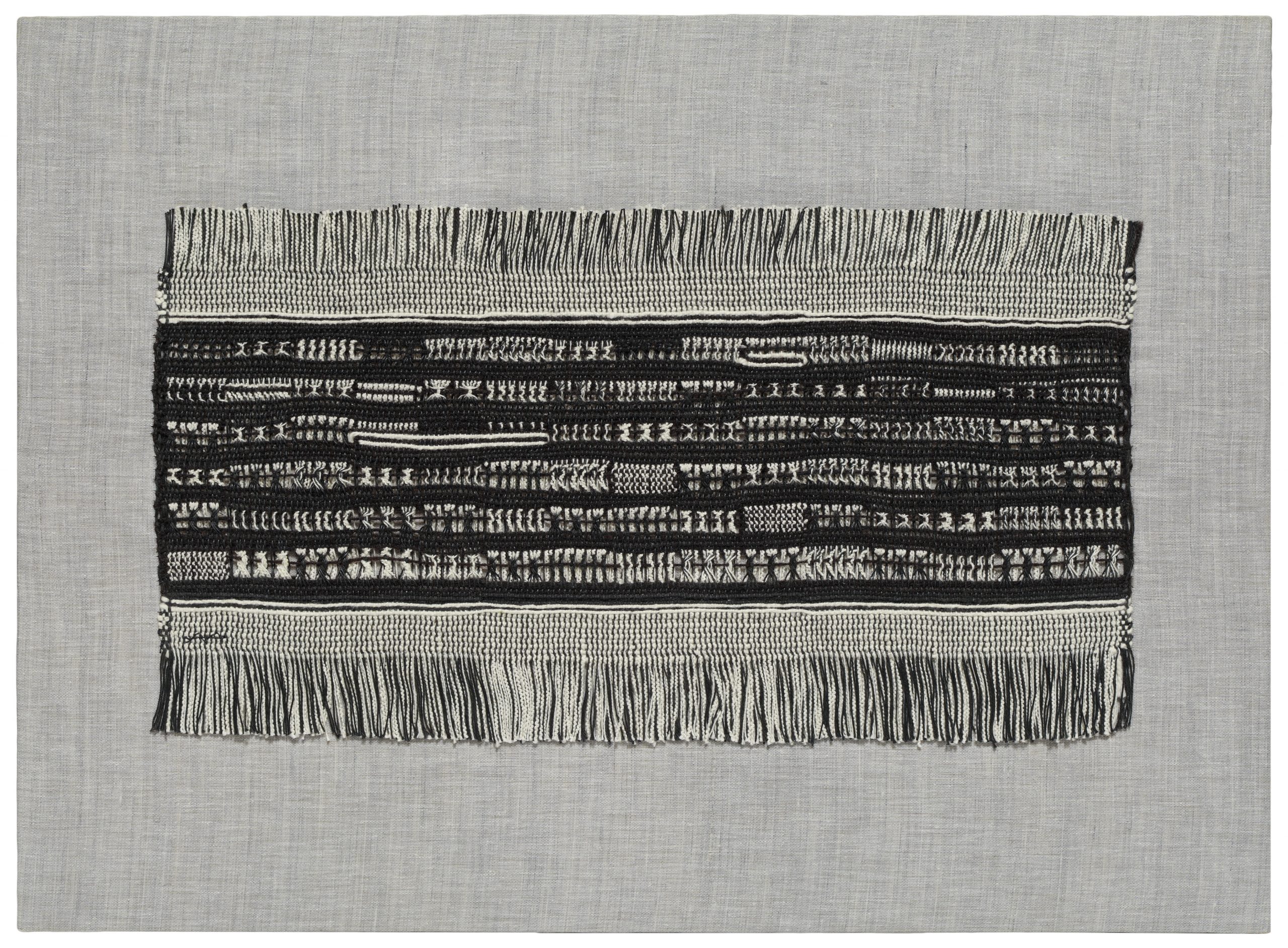
Anni Albers
b. Berlin, Germany, 1899–1994
Memo
1958
Woven textile mounted on fabric mounted on wood in artist’s frame
The Joseph H. Hirshhorn Bequest, 1981 (86.28)
About Museums Without Men
Celebrated art historian Katy Hessel has launched an audio guide series highlighting the women and gender-nonconforming artists in the public collections of international museums. Museums Without Men is an ever-growing series that introduces museum visitors to underrepresented and often lesser-known artists, opening up collections to new and existing audiences who will be able to follow the audio stops while in the galleries or online. The series links public institutions globally, including the Fine Arts Museums of San Francisco; the Metropolitan Museum of Art, New York; the Hepworth Wakefield, UK; the Hirshhorn Museum and Sculpture Garden, Washington, DC; and Tate Britain, London, to foreground the important work that museums and galleries do by collecting and displaying women and gender-nonconforming artists, whether historical or contemporary.
Transcript
[00:00:00] Anni Albers. Anni Albers uses thread the way painters use paint. Her stringy marks glide across the surface, full of texture and a multiplicity of colors, often with white speckles that give it that three-dimensional effect. Albers saw art as something essential to life, and began her career at the Bauhaus, a school founded in the aftermath of World War I that enforced function over form. Although meant to be non-hierarchical it was far from it, because here women were confined to the weaving workshop, as threads were considered a lesser art form than architecture or sculpture. Nevertheless, Albers thrived at the Bauhaus and went on to earn awards for her textile-based inventions, such as sound absorbing [00:01:00] wool fabrics.
But as the rise of Nazism consumed Europe, Albers needed a route out. Together with her husband, who was also an artist, she rebuilt her life in the U.S., landing in a small rural school in North Carolina called Black Mountain College. This school would become known as the most experimental institution of the 20th century and the most progressive.
It eliminated hierarchies between students and teachers, genders and races, and saw subjects from maths to pottery on an equal plane. Albers encouraged her students to learn through doing, and to use the resources they had around them for their art. She even made necklaces from old sink plugs. Whereas her previous works had always had a function, here she began to [00:02:00] weave purely as a means of self expression, webbing together color, form, and lines.
She called these her pictorial weavings. and was inspired by summer trips to Central and South America where she learnt about pre-Columbian Peruvian textiles and melded the techniques that she learned here with those she already knew. The textile in front of you is a great example, with its distinct lyrical forms that display the fusing of cultures and her skill in creating complex patterns using the loom.
Anni Albers is remembered as a weaving legend. At the height of the fibre arts movement in the 1950s and 60s, she became the first female textile artist to have a solo exhibition at MoMA. In 1965, she published her monumental and influential book, On Weaving, which is still celebrated [00:03:00] today.